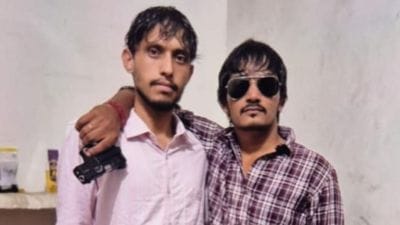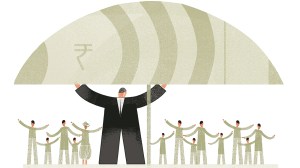Karmapa’s rough road to Rumtek
Cheek by jowl with the lush, green paddy, the white prayer flags point you in the direction of Rumtek. Underneath, the four-wheel drive bite...

Cheek by jowl with the lush, green paddy, the white prayer flags point you in the direction of Rumtek. Underneath, the four-wheel drive bites the dust, then eases itself out of the crevasses that pass for roads en route to the monastery. Suffering and compassion, discomfort and peace, it has always been the Buddhist way.
But there’s an ungodly tension in this holiest of holy shrines to the Karma Kagyu sect in the heart of Sikkim, and it manifests itself in the rundown prayer wheels—actually, vanaspati tins masquerading as prayer wheels—in the inner monastery line. In the rosary from the bodhi tree on sale in the little shop outside that falls apart in one gentle tug. In the Dalda that has replaced the yak butter lamps. And there, pasted on the monastery walls is a palm-sized sticker that says, ‘‘Karmapa for Rumtek.’’
Upstairs on a top floor, a round-the-clock security detail guards the priceless treasures of this Buddhist sect—chief among them a black conical cloth cap called the ‘Black Hat’ and scores of antique religious paintings or thangkas—that rightfully belong to the real reincarnation of the 16th Karmapa, the all-powerful head, who died in 1981. Question is, who is the real Karmapa?
The answer to that question, at least for a majority of Sikkimese, lies in the heart of Rumtek. There on the main throne in front of the Buddha statue and flanked by secondary thrones for the chanting masters, is an enormous, coloured portrait of Ugyen Thinley Dorji, the boy-monk who fled from the Tsurphu monastery in Tibet in the winter of 2000 and escaped into India.
Problem is, some in the Centre believe young Dorji, barely 18 years old, to be a Chinese spy. According to a section of the establishment in New Delhi, which boasts of having had prior information of his ‘‘great escape,’’ there was no way Dorji could have undertaken the strenuous journey to Nepal, on jeep and on foot, without a wink and a nod from the Chinese authorities who tightly control movement in all Tibet.
The Centre also argues that there is more than one claimant for the Karmapa title, and indeed there’s a case in court against the legitimacy of Ugyen Dorji. Moreover, with Sikkim at the geostrategic crossroads of Nepal, Bhutan and Tibet, installing a ‘‘Chinese spy’’ at Rumtek—which presides over the enormously rich and highly influential Karma Kagyu monastic order worldwide—would be dangerous, they say, if not downright foolish.
Whatever the truth, the worry lines are beginning to appear on the face of Sikkimese Chief Minister Pawan Chamling. ‘‘The fact is that the people of Sikkim revere Ugyen Thinley Dorji as the real Karmapa,’’ he told journalists last week, adding, ‘‘not only was he acknowledged as the Karmapa at Tsurphu in Tibet, but even the Dalai Lama believes him to be the genuine article.’’
Officials in Tashiling, the state government secretariat in Gangtok, point at the deep-seated Sikkimese faith in Ugyen Thinley Dorji. ‘‘Sikkim is still an island of peace in this region,’’ one senior official said, requesting anonymity, ‘‘but if the Centre is going to start politicising religious sentiments as they have done elsewhere in the country, it may run the risk of not only reopening the old wounds of annexation and integration, but also of demonising Buddhism.’’
Clearly, an undercurrent of resentment against New Delhi’s decision to prevent the Karmapa from coming anywhere near Rumtek—the farthest east he has been allowed to go is Kolkata—is gathering strength. In the bazaar and in government, there are few who contest the refrain that the Karmapa should be allowed to return to his rightful seat in Rumtek.
Some even offer a compromise: Let Ugyen Thinley Dorji be allowed to come to Rumtek for a while, let the security forces completely cover him. Let him perform the religious ceremonies and as the 17th Karmapa, sanctify Rumtek. Then let him return to Dharamshala. They point out that a majority of Sikkim’s five-lakh population has probably already travelled to Dharamshala, to see and listen to him.
Back at the monastery, hope dies last. The afternoon prayer to Mahakal and Mahakali, accompanied by the staccato sound of the gong, sonorously rolls out like it’s done for decades. The devotees swing their folded hands up in the ancient ritual, then fall to the ground. The dalda flame flickers on, in front of the compassionate Buddha. Only Ugyen Thinley Dorji stares back impassively, the unblinking eyes of his photo-portrait waiting for the arrival of the real thing.
Photos





- 01
- 02
- 03
- 04
- 05


























